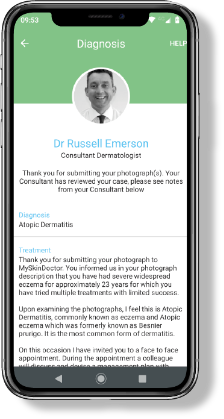Acne
Acne is a common chronic disorder affecting the hair
follicle and sebaceous gland, causing blockage of the follicle and
inflammation.
It is characterised by:
Alopecia areata
Alopecia is a general term used for hair loss of any kind. Alopecia areata is a name given to a particular type of hair loss. It
is usually associated with small, coin-size, bald patches.
It affects 1% of the population and is often seen in
children and young adults. It can affect any race and any skin type.
Most patients have small patches but in some the condition can be more
extensive causing significant hair loss. It can be a very distressing
condition to develop because of the cosmetic embarrassment it causes.
Many patients experience significant psychological stress.
Basal cell carcinoma
A basal cell carcinoma (BCC) is the commonest type of skin
cancer. They are sometimes referred to as ‘rodent ulcers’ and account for
about 80% of all skin cancers in the UK. There are number of different
subtypes of BCC, and the treatment depends on the subtype. A Nodular
BCC presents as a slow growing nodule and is the commonest form of
BCC, accounting for about 60% of all cases.
Benign dermatofibroma
This is a benign overgrowth of fibrous tissue in the deeper layer of
the skin called the dermis.
Benign mole (melanocytic naevi)
A melanocytic naevus is the medical term for a mole.
The word ‘melanocytic’ means that they are made up of the cells
situated deeper in the skin (melanocytes) which produce the dark
pigment (melanin) that gives the skin its colour. Melanocytes can
cluster together to form a clear-coloured skin lesion, or a pigmented
lesion depending on how much melanin they produce. In other words,
moles are benign (harmless) groups of melanocytes.
Some moles (congenital melanocytic naevi) are present at birth. Most develop during
childhood and early adult life (acquired melanocytic naevi). Almost everyone has moles. Many people have
between 30 and 50, or more. Many spontaneously disappear later in
adult life. Moles can be found anywhere on the skin, including on the
hands and feet, genitals, eyes and scalp. Most people who develop
moles do not develop skin cancer.
Bowen's disease (severe sun damage)
Bowen’s disease or Squamous cell carcinoma in situ, is a growth of
sun-damaged cells that is confined to the surface layers of the skin.
They present as itchy scaly areas of skin. They may be single or
multiple. There is a small risk of a type of skin cancer called Squamous
Cell Carcinoma which may develop in areas of Bowen’s disease, but this
risk is very small and affects less than 3-5% of patients.
Contact dermatitis
Also known as contact eczema, is inflammation of the skin caused by
direct contact with a with something in the environment. This can be
caused by one thing or a mixture of things especially when it comes to
hand dermatitis. This is the most common cause of occupational skin
conditions very common in cleaners, health care workers, food industry
and hairdressers.
Cysts
A cyst is a closed sac (think of a pea with a shell) that has two
main features:
-
A lining or cyst wall
-
Contents that are liquid or semi-solid
Both types of cyst contain a cheesy material that can have a slight
odour. They are made up of keratin, one of the proteins that makes up
the outer layer of the skin. Pilar
and epidermoid cysts are still occasionally known
as sebaceous cysts,
but this is a historical term that should no longer be used.
Epidermoid and pilar cysts
are common, not cancerous and not contagious.
Eczema
Eczema is a very common skin condition due to skin inflammation.
Eczema (or inflammation of the skin) can affect anyone at any time in
their lives. One in every five children in the UK is affected by
eczema at some stage. It may also start later in life in people who
did not have Atopic Eczema as a child.
Eczema’ is a term which comes from the Greek word ‘to boil’ and is used to
describe red, dry, itchy skin which can sometimes become weeping,
blistered, crusted, scaling and thickened.
Folliculitis
Folliculitis is the name given to inflammation of the hair follicles,
which results in red, tender spots, often with pustules on the surface
of the skin. It can affect anywhere where hair grows, such as the back,
chest, buttocks, arms and legs.
Malignant melanoma
Melanoma in situ is the very earliest stage of a skin cancer called
melanoma. ‘In situ’ is Latin for ‘in space’. It means that the cancer
cells have not had the opportunity to spread to anywhere else in the
body. About 7,000 people in the UK are diagnosed with melanoma each
year. The word ‘melanoma’ comes from the Greek word ‘melas’, meaning
black. Melanin is the pigment that gives the skin its natural colour.
Melanin is made in the skin by pigment cells called melanocytes. After
our skin is exposed to sunlight, the melanocytes make more melanin, and
so the skin becomes darker.
Psoriasis
Psoriasis is a common skin disease affecting 1 in 50
people. It occurs equally in men and women. It can appear at any age.
Psoriasis is a long-term condition which may come and go throughout
your lifetime. It is not infectious; therefore, you cannot catch
psoriasis from someone else. It does not scar the skin although
sometimes it can cause a temporary increase or reduction in skin
colour. Although psoriasis is a long-term condition there are many
effective treatments available to keep it under good control.
Psoriasis can affect the nails and the joints as well as the
skin. Psoriatic arthritis produces swelling and stiffness in the joints
or stiffness in the lower back and should be managed by a
rheumatologist who works closely with your dermatologist and/or your
GP.
Rosacea
Rosacea is a common skin condition, that predominantly
affects fair-skinned individuals aged 30 to 60 years of age. Rosacea
usually develops on the central face but can occur at other sites
including around the eyes (periocular rosacea), around the mouth
(perioral rosacea), scalp and occasionally the chest. It is occasionally
localised to one side of the face. It can present suddenly at any time
of life and resolve with treatment. In others it can be a chronic
condition with repeated flares requiring maintenance treatments. The
clinical features include redness of the affected skin on the cheeks,
forehead, chin and nose, that can be slightly itchy, and is often
followed by the development of small, red, inflamed spots. In more
persistent cases the redness becomes more fixed and can be accompanied
by dilated superficial blood vessels called telangiectasia. Some
patients also develop inflammation of their eyelids (blepharitis) and
slight redness of the conjunctiva of the eyes. Eye symptoms are often
subtle but some patients have severe blepharitis.
Seborrhoeic keratosis
Seborrhoeic keratoses (also known as seborrhoeic warts or basal cell
papillomas) are raised warty non-cancerous growths of the surface layers
of the skin that develop as we get older. They vary in colour and are
usually light to dark brown. They look as though they have been “stuck
on” the top of the skin.
The most common sites to develop seborrhoeic keratoses
are the areas where we get the most sun exposure over our lifetime such
as the face, scalp, chest and back. Whilst some patients develop a
single seborrheic keratosis it is very common for patients to develop
multiple seborrheic keratoses.
Solar keratosis
Solar keratosis (also known as Actinic keratosis) are patches of dry,
scaly skin, which may cause itching and irritation. They commonly occur on the
scalp, face, ears, forearms, and back of the hands. They are very
commonly seen on the scalp in men who have hair thinning.
Solar lentigo
A lentigo is a flat or slightly raised brown lesion with a clearly marked edge. A lentigo can be distinguished from a true
freckle (ephelis) by the darker colour, wider distribution and the fact
that they do not fade in the winter months. They are very common and
there are several kinds of lentigines.
Strawberry haemangioma
A ‘haemangioma’ (Greek for blood-vessel-growth) of Infancy is a benign
(non-cancerous) overgrowth of blood vessel cells in the skin (cutaneous
blood vessels), that is self-limiting (will stop growing without
treatment). The term ‘strawberry naevus’ or ‘strawberry haemangioma’ is
used for a haemangioma that looks similar to a strawberry.
Urticaria
Urticaria is a condition where you get short-lived, itchy
skin
swellings known as hives or weals and typically any individual weal will
clear within 24 hours although the overall rash may last for longer.
Angioedema is a form of urticaria in which there is deeper swelling in
the skin, and the swelling may take longer than 24 hours to clear. The
visible angioedema typically presents with facial swelling (eyelids,
mouth, tongue) or genital swelling. Angioedema can affect internal
organs (airways) usually during an anaphylactic episode
Urticaria is very common and 20% of people would have
had urticaria at some point in their lives.
Warts
These appear as small rough lumps on the skin caused
by infection with the human papillomavirus (HPV). They can occur
anywhere but most common on the hands and feet. Examples of different
types of warts include common wart, verrucae, plane warts (flat),
filiform warts (finger like) or mosaic warts (many joined
together)
















